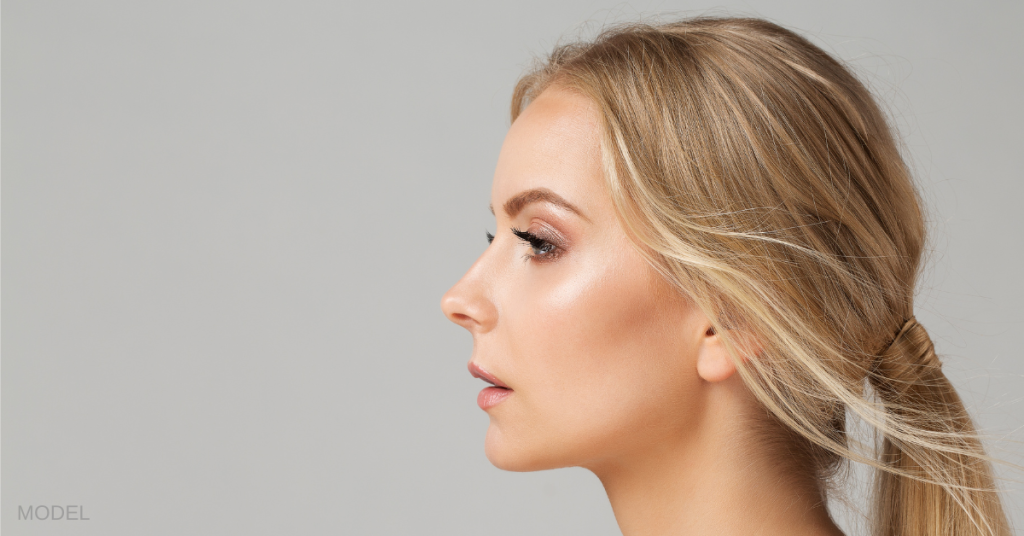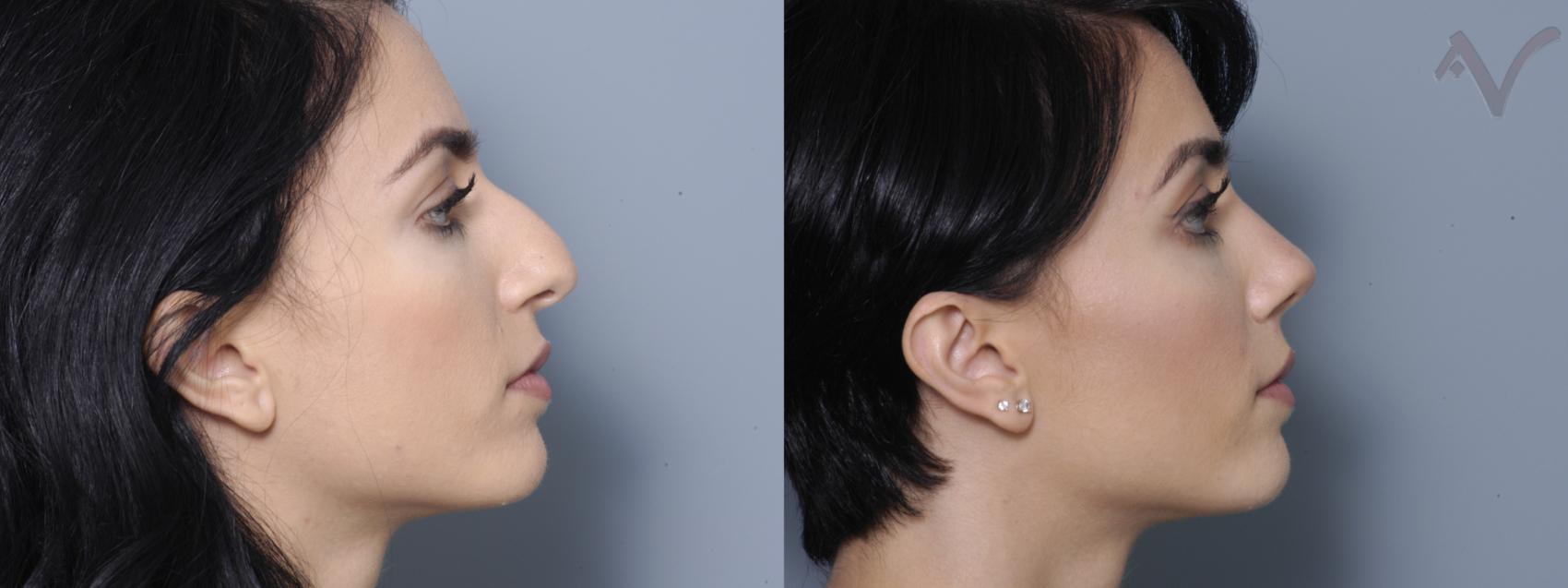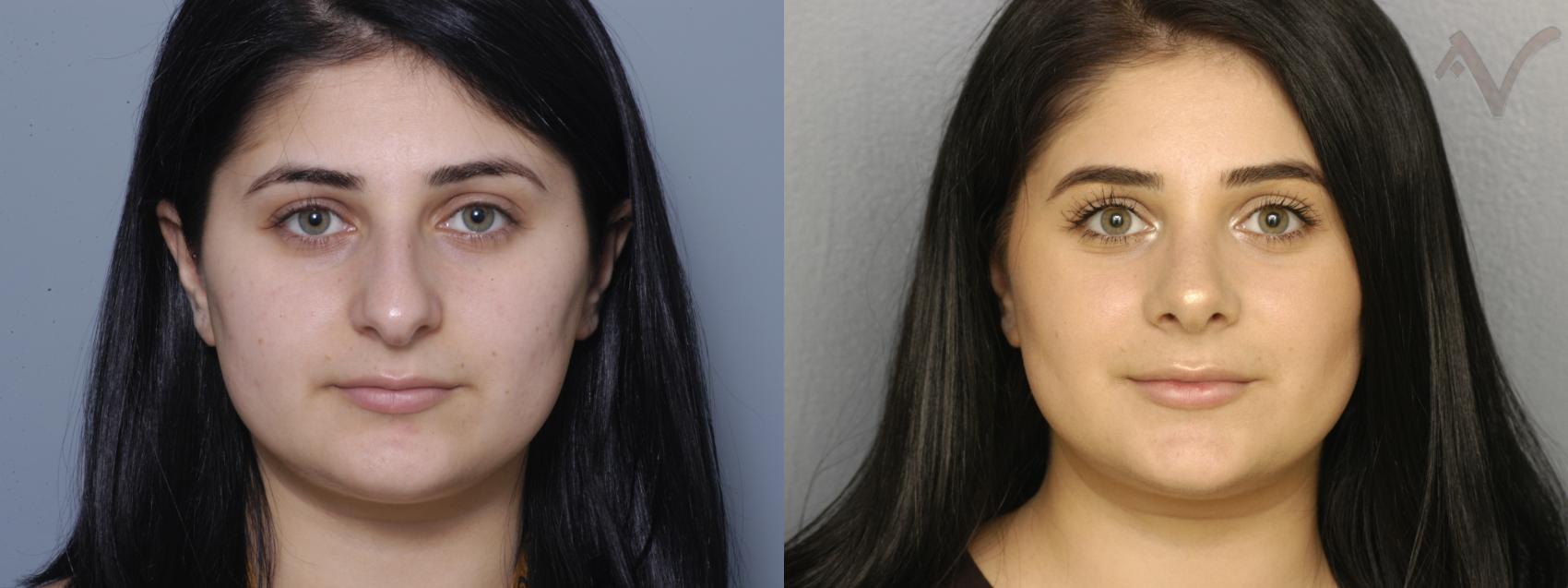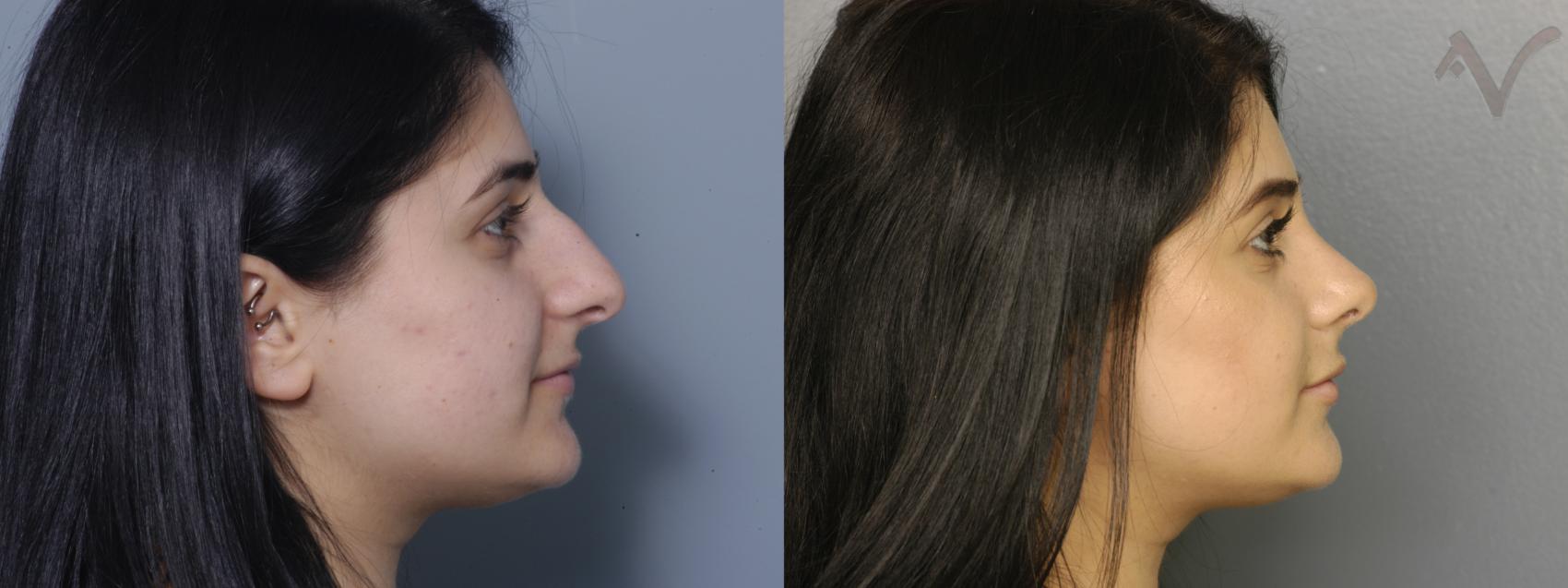While you’re probably excited about finally achieving the symmetrical, well-shaped nose you’ve always wanted with rhinoplasty, you may also be a little apprehensive about the recovery. How long will it take to heal? When can you go back to work? How soon can you return to life as usual? We answer these and other questions in our rhinoplasty recovery timeline below.
How Long Is Recovery After Rhinoplasty?
The initial recovery phase is shorter than many patients expect. You’ll need to take it easy for the first 7 to 10 days after your surgery. Visible swelling will reduce within 2-3 months, and up to 1 year for all swelling to subside. The initial recovery period after your procedure is essential since it is the time when you will have to pay the most attention to your aftercare instructions.
For more information about rhinoplasty, check out our related blog post.
Rhinoplasty Before and After Photos
You can see more of the results our patients enjoy in our rhinoplasty before-and-after photo gallery.
What to Expect: A Recovery Timeline for Rhinoplasty
Each person’s rhinoplasty recovery experience is a little different day by day and week by week. However, the following rhinoplasty recovery timeline can help you know what to expect after your procedure.
First Day
Getting enough rest is a priority. Carefully follow our post-op protocol. Some initial discomfort is normal after surgery, although our patients are often pleasantly surprised that it is milder than expected. Applying cold compresses can provide relief consistently in the first 48-72 hours. Avoiding a hot shower is wise because heat can increase swelling. We also advise keeping your head elevated to minimize swelling and bruising.
Weeks 1 and 2
Swelling and bruising around your nose (and sometimes your eyes) are typical and peak 2 or 3 days after surgery. We’ll remove your splint at your first post-op appointment about a week after your surgery. You can resume nonstrenuous work after 1 or 2 weeks, but avoid movements that may strain your face. Do not lift any heavy objects during this time. We also advise patients not to wear glasses during the first 8 weeks. Thus, we recommend ensuring the patient has contact lenses.
Weeks 3 and 4
If approved by Dr. Vartany, you may be able to resume your normal routine and light exercise during this time. However, you may need to avoid resistance workouts and strength training for a little longer. Most of your swelling should resolve during this time, but lingering swelling may take up to a year to completely subside.
Week 6
Most patients can resume strength training and resistance workouts at this point, but you shouldn’t participate in contact sports.
Months 3 to 6
As your residual swelling gradually fades, the results of your rhinoplasty procedure emerge more clearly.
One Year
By the 12-month milestone, you’ll see the full results of your rhinoplasty procedure.
For more on rhinoplasty recovery, visit the American Society of Plastic Surgeons.
Is Recovery After Revision Rhinoplasty Longer?
If you’re having Dr. Vartany revise a rhinoplasty procedure performed by another surgeon, the recovery will be similar to that after a primary rhinoplasty surgery. Depending on your unique circumstances, the specific post-op instructions may vary.
Rhinoplasty Recovery Tips
Each patient’s rhinoplasty recovery will differ, but you can take some simple steps to ensure a smooth recovery.
- Follow your plastic surgeon’s recommendations.
- Apply ice packs to your eyes and cheeks to minimize swelling and bruising.
- Keep your head elevated as much as possible after the procedure.
- Maintain a balanced diet to help with healing and avoid inflammation.
- Avoid blowing your nose for at least 10 days.
Dr. Armen Vartany is a double board-certified plastic surgeon, with a passion for rhinoplasty. He is renowned for producing excellent results. If you are ready for a more refined and symmetrical nose, request a consultation or call us at (818) 500-0823 to schedule an appointment.
Updated September 2024









Leave a Reply